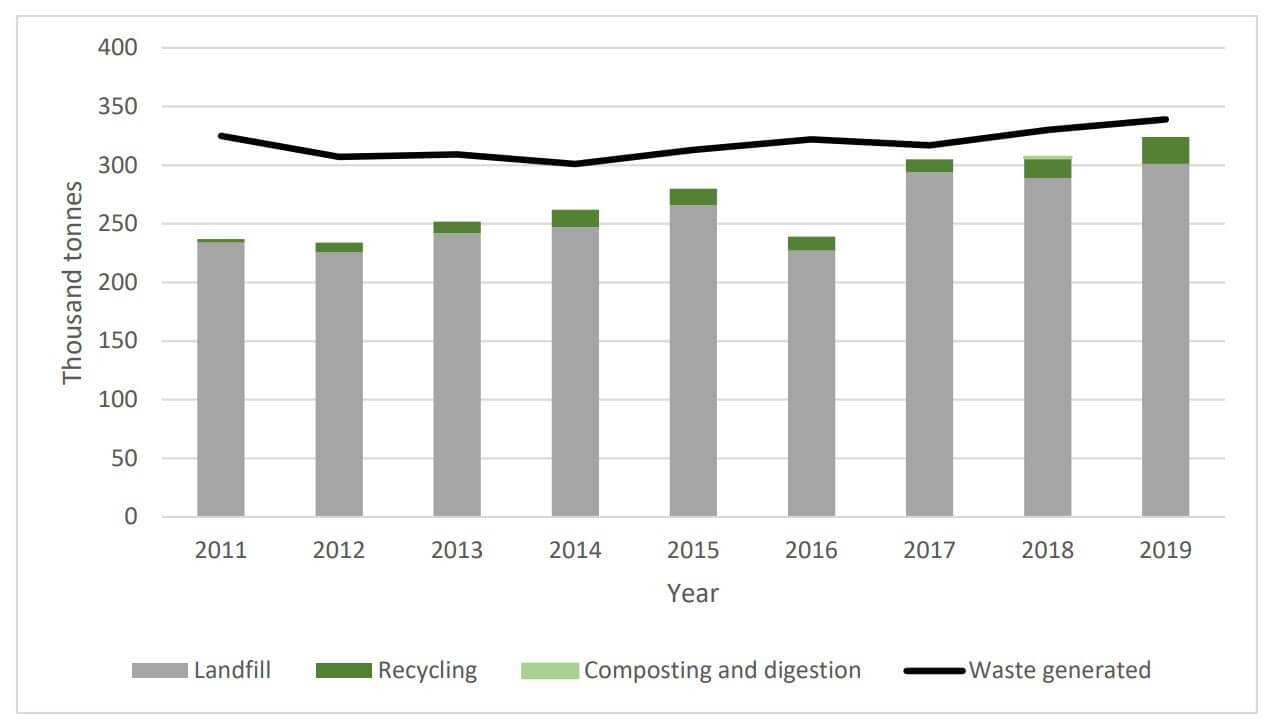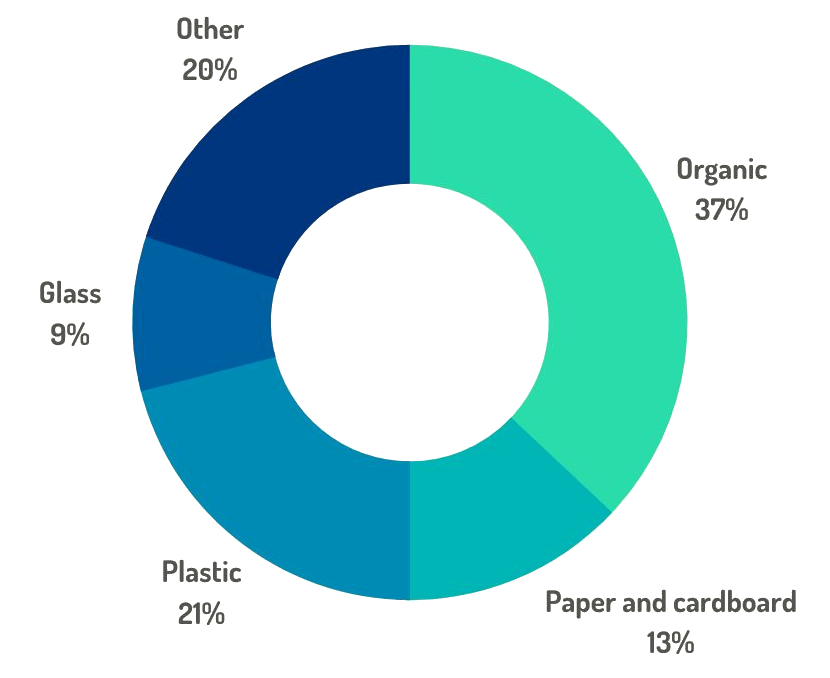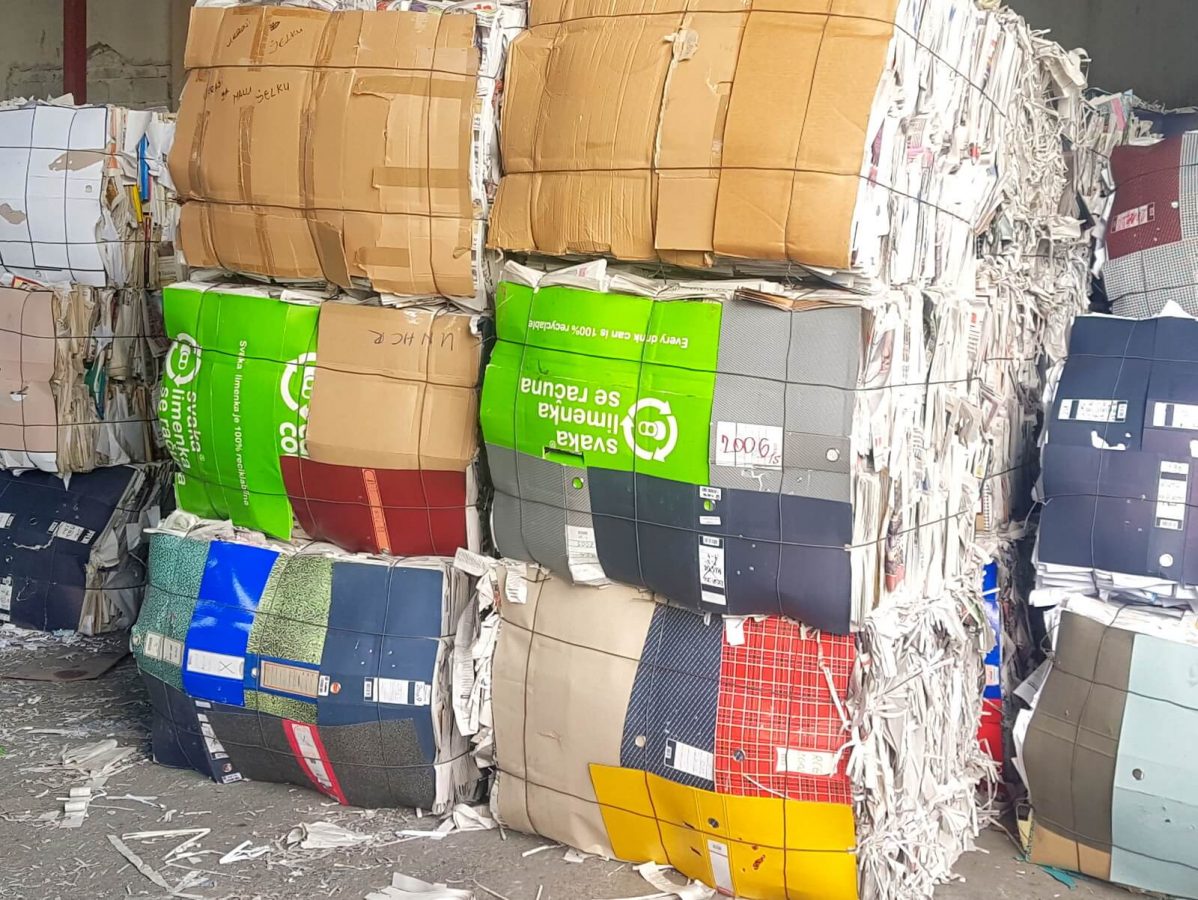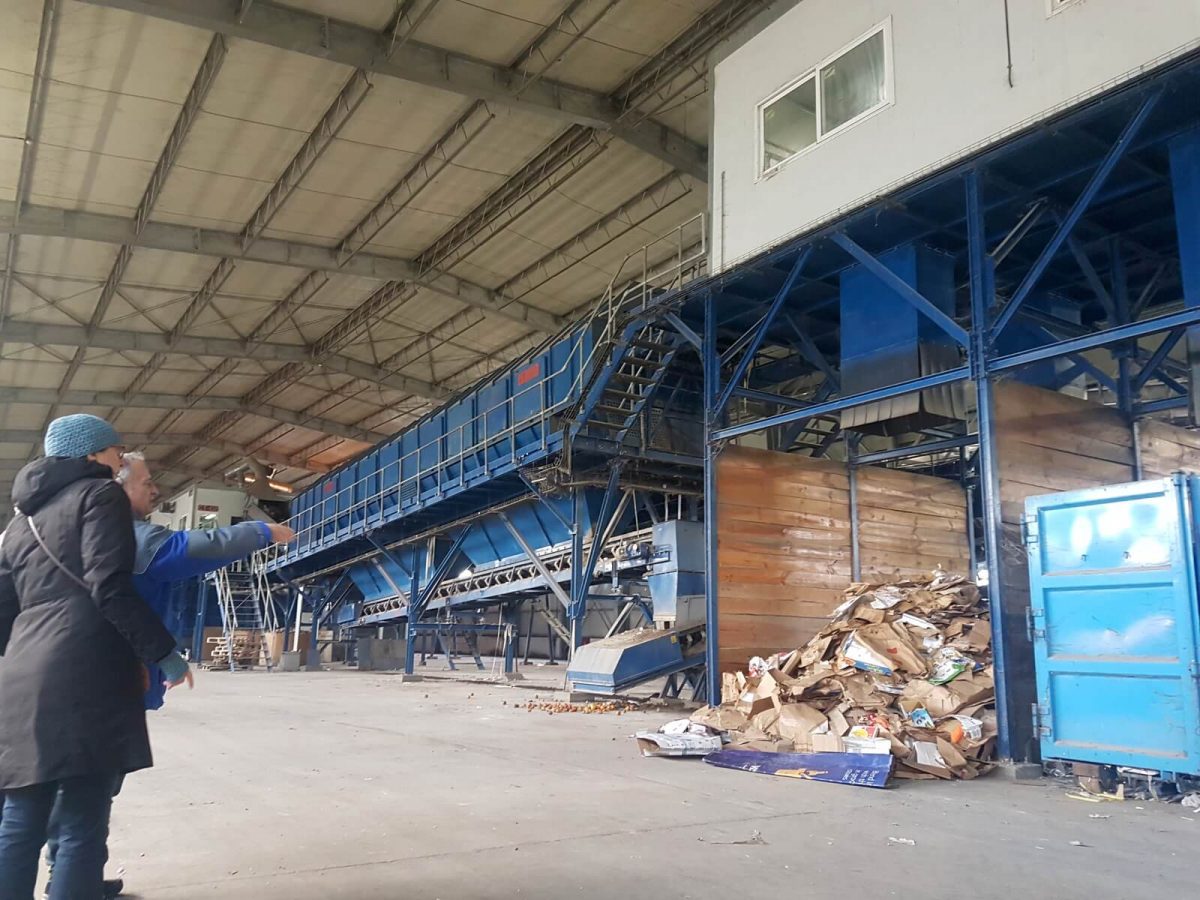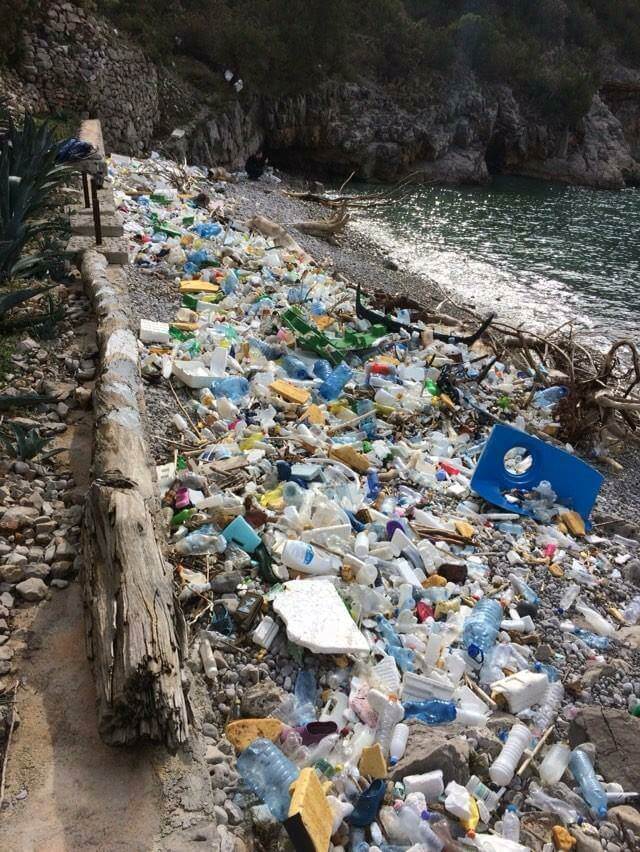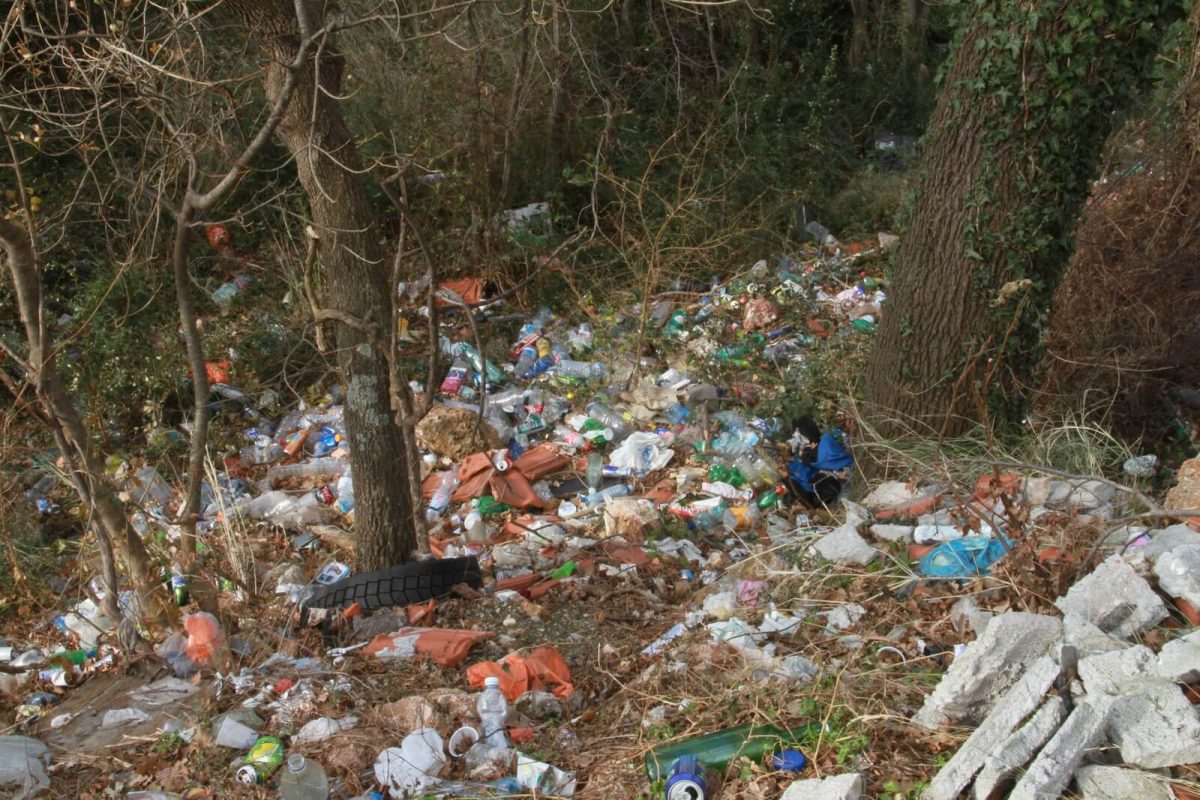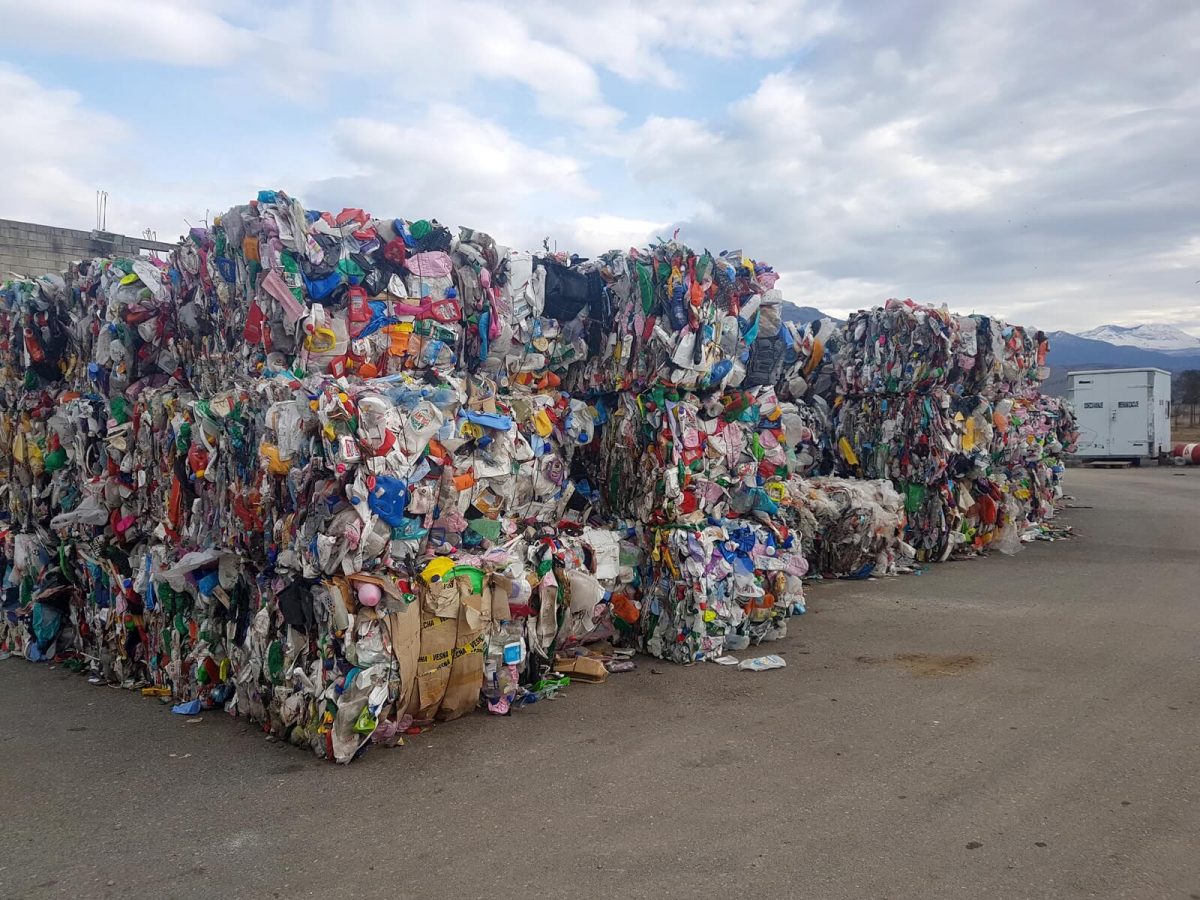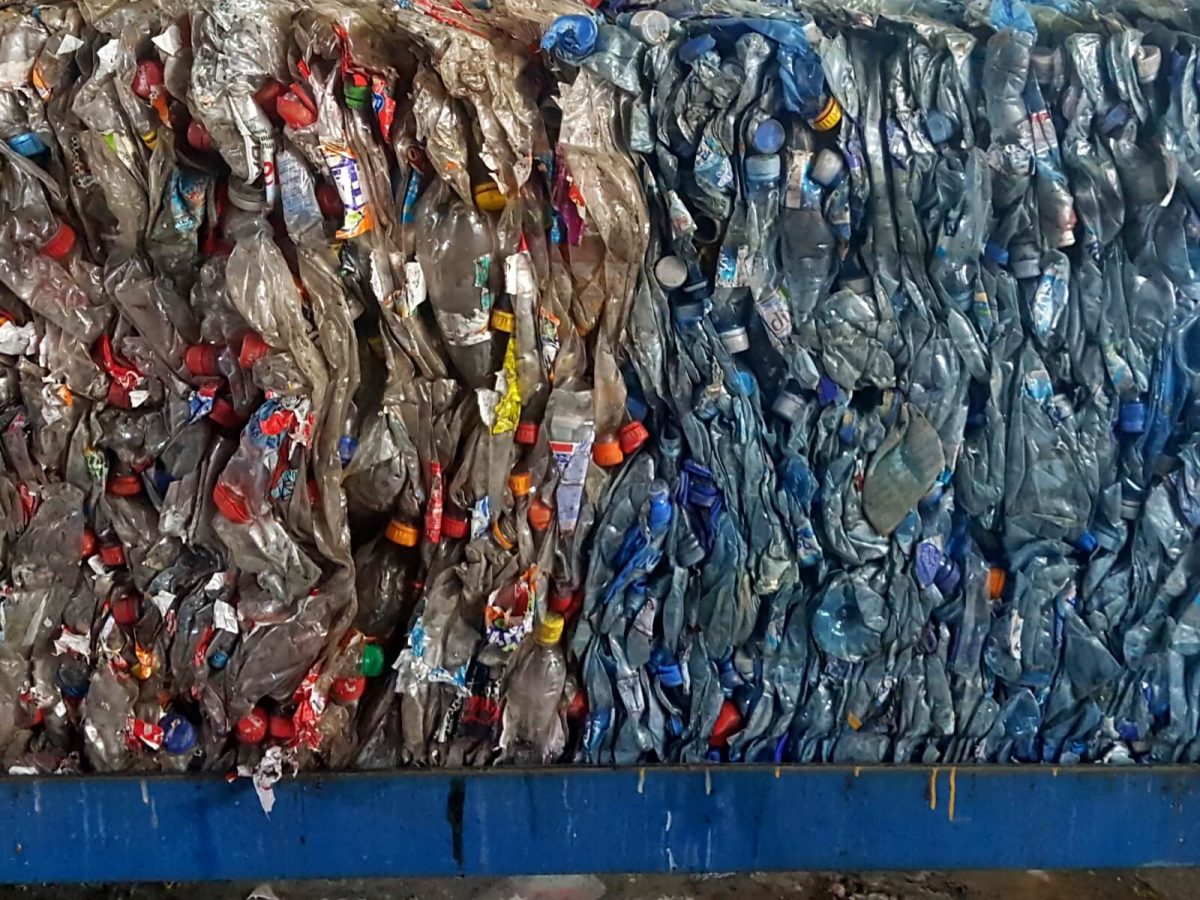ZERO WASTE MONTENEGRO
Solid Waste Management
Status in Montenegro
On this page, we intend to give you an overview as realistically as possible of the current situation of waste management in Montenegro: what waste is produced, how they are collected, sorted, and recycled, what is infrastructure in place and what are the challenges Montenegro is facing today to deal with its waste.
Please note: If you wish to use some quotes from this page for personal or commercial uses, you’ll need to credit Zero Waste Montenegro and put a link to this page, as well as inform us by sending an email to info@zerowastemontenegro.me. Thank you.
The latest report of the European Commission in Montenegro (2021) summarises accurately the current situation:
֞ Regarding waste management, Montenegro remains partially aligned with the EU acquis. Considerable efforts on strategic planning and investments are needed to implement the national strategy for waste management until 2030. Work on the Law on waste management continued during the reporting period. A new national waste management plan remains to be drafted after expiry of the one for 2015-2020. The details of the country’s waste management model and the modalities of its implementation remain to be clarified. Awareness campaigns were conducted to promote waste separation and appropriate disposal. The list of unregulated landfills was updated, in collaboration with civil society organizations. There remains an urgent need to remedy illegal waste disposal and the use of temporary waste disposal in all municipalities. Infrastructure for separate waste collection and recycling remains to be established across the country. ֞
1 – Waste production and composition
-According to MONSTAT (Statistical Office of Montenegro) the total amount of waste generated in 2021 is 1,477,865.8 t (so a 12.4% increase compared to the previous year)
- Industrial waste accounts for 46.2% of the total amount of generated waste, and hazardous waste for 20.6%.
- The total amount of municipal waste is 325,707.5 t (7.1% increase compared to the previous year)
- The amount of municipal waste per capita is 526.0 kg, (7.5% increase compared to the previous year), i.e. 1.4 kilograms per day per capita
- The total amount of processed waste is 303,041.5 t, of which 87.7% was disposed of.
In the figure below, you can see the evolution of municipal waste generated and treated per thousand tonnes in the period of 2011 to 2019.
Figure 1: EEA Country Fact Sheet, November 2021, Eurostat (2021) for 2011-2018, Monstat (2020b) for 2019.
Figure 2: National Waste Management Plan of Montenegro, 2015 – 2020
2 – Waste collection and recycling
According to Monstat, 87.6% of Montenegro’s population is covered by public waste collection services in 2021 (a 0,6% increase from the previous year). Of the 297 thousand tons of municipal waste collected, 5.6 thousand tons, or only 1.8%, were recycled.
In 2018, The Ministry of Sustainable Development and Tourism accepted the two-bin system for separate waste collection of “dry” and “wet” fractions and sent consent for its implementation to local administrations and utility companies. The container for the “dry” fraction is intended for the disposal of paper, cardboard, plastic, metal and glass, while the container for the “wet” fraction is intended for the disposal of all the other types of municipal waste (waste that by its composition mostly wet due to the presence of food residues, organic waste, garden waste, hygiene products, etc.), not including bulky waste and edible oils and fats.
Separate waste collection is hardly giving results because the infrastructure is lacking in most parts of the country and there are no financial incentives for sorting waste at the source, nor penalties for not doing it. A few municipalities have started to implement the 2 bins separation system but have had very poor results so far, mostly due to a lack of incentives for separating waste at source (such as door-to-door systems), lack of communication and awareness raising, and also inadequate collection bins. Gusinje municipality has implemented the separation of waste at the source (door-to-door collection), which is easier to control. Since 2020, Gusinje is working on becoming a Zero Waste City following the Zero Waste City program and is expanding its separation system to a 5 bins system, the first one in Montenegro: organics, cardboard/paper, metal/glass, plastics, residual waste.
Recycling activities are very limited in Montenegro (under 2%) as recyclables collected remain very low. Some recyclables collected (such as PET and HDPE bottles, cardboard, aluminium and glass) are sold to be recycled abroad, but the issue of low quantity makes it often unattractive to foreign recyclers.
Littering is still a major issue in Montenegro. There is a lack of infrastructure for bulk waste, construction waste and in some areas hazardous waste as well. 13% of domestic waste remains uncollected by public authorities which also contributes to the littering issue. There is also an important lack of environmental inspectors in the country and penalties for littering are not enforced.
3 – Waste infrastructure
The waste infrastructure in Montenegro consists of the following:
- regional landfills for non-hazardous waste in Podgorica and Bar,
- recycling centres* in Podgorica, Herceg Novi, Kotor and Žabljak,
- vehicles waste processing plants in Podgorica (1), Berane (1) and Nikšić (3),
- transfer stations in Kotor and Herceg Novi,
- recycling yards in Podgorica (6), Herceg Novi (1), Kotor (1) and Budva (1),
- medical waste processing facilities in Berane and Podgorica,
- electrical and electronic waste processing facilities in Bar,
- composting plant in Kotor for managing green waste in the municipalities of Kotor, Tivat, Budva and Herceg Novi (EPA. 2019)
* Montenegro names recycling centres its recyclables sorting centres.
It is estimated that there are around 400 unregulated and illegal landfills in Montenegro. According to the latest National Waste Management Plan (2015-2020), it was planned to construct regional landfills in Kotor, Niksic, Berane, Bijelo Polje, Pljevlja and Herceg Novi but the construction hasn’t started yet.
In May 2018 the Government announced that waste management infrastructure will consist of operating 4 waste management centres (Podgorica, Nikšić, Bijelo Polje and Bar) giving them the choice of having a Recycling Center (MRF Plant) and/or a waste treatment plant for separate and controlled disposal of construction waste, and/or a waste heat treatment plant and/or a sanitary landfill. The choice is left to each waste management centre to select the most appropriate solution depending on their needs and their budget.
4 – Secondary material market
Waste purchase, collecting, treatment or transporting companies in Montenegro, registered at the Environmental Protection Agency:
- Eko modus, Budva
- Matej, Cetinje
- Inter trade co, Podgorica
- SS Alga, Niksic
- Stit Company, Niksic
- Hemosan, Bar
- Milina, Podgorica
- Deponija, Podgorica
- Cistoca, Podgorica
- Otkup katalizatora Mile, Podgorica
- UMK, Niksic
- Centar za reciklazu, Niksic
- Preduzetnik Shefshet Sahiti, Seki, Berane
- Tring, Podgorica
- Eko stit, Podgorica
5 – Waste Management challenges in Montenegro
The key constraints in the improvement of waste collection and recycling in Montenegro are:
- Unregulated and illegal landfills across the country
- Inadequate waste management, separate collection and recycling infrastructure
- Low financial, human resources and material capacity of the waste management companies
- Underdeveloped secondary material market
- Low awareness regarding the impact of single-use plastics, unregulated waste land-filling and the local practices of outdoor waste incineration
- Low awareness among employees of Montenegrin institutions
- The lack of (human and financial) resources at the national level
- Lack of human resources for inspection activities
- No financial incentives for sorting waste at the source
- Poor law implementation regarding DRS and EPR schemes
- Lack of data records about packaging waste
6 -Waste Management institutional framework
- Ministry of Sustainable Development and Tourism
- Environmental Protection Agency
- Local governments of 23 municipalities
- Local Waste Management Companies
- Directorate for Inspection Affairs of Montenegro – Department for Environmental Inspection
- MONSAT (Statistical Office of Montenegro)
In April 2024 the new Law on Waste Management has been adopted.
This law is crucial for aligning Montenegro’s waste management practices with European Union (EU) standards, particularly focusing on increased waste separation at the source, improved recycling rates, and establishing necessary waste management infrastructure.
The new law introduces several key provisions, including the Extended Producer Responsibility (EPR), which requires producers and importers to manage waste from their products. To find out more visit our webpage about EPR.
Additionally, the law bans the use of lightweight plastic bags with a thickness between 15 and 50 microns. For plastic bags with a wall thickness of 50 microns and above there will be a fee, and the funds from this fee will be paid into the account of the Environmental Protection Fund and can be used exclusively for financing and co-financing activities to raise awareness about environmental protection. The ban is mandated to be put in force from October 2024. To discover about our advocacy journey to ban single-use plastic bags in Montenegro go to this page.
The drafting of the new National Waste Management Plan has also been in progress. The plan’s finalization was contingent on the adoption of the new waste management law, which has now been completed. In the meantime, sistem upravljanja otpadom funkcioniše u skladu sa isteklim Nacionalnim planom upravljanja otpadom (2015-2020).
The adoption of NWMP should enable municipalities to update their local waste management plans in line with the new national framework.
7- The Waste Management legislative framework consists of
-
- Law on Waste Management
- National Waste Management Plan (2015-2020)*
- The Law on Communal Services
- National Strategy for Sustainable Development until 2030
- Municipal Waste Management plans
- Roadmap towards the circular economy in Montenegro
- Draft of the National Strategy for Circular Transition until 2030 with an Action Plan from 2023 to 2024
- Generated and processed waste data, MONSTAT (Statistical Office of Montenegro)
* still under creation

